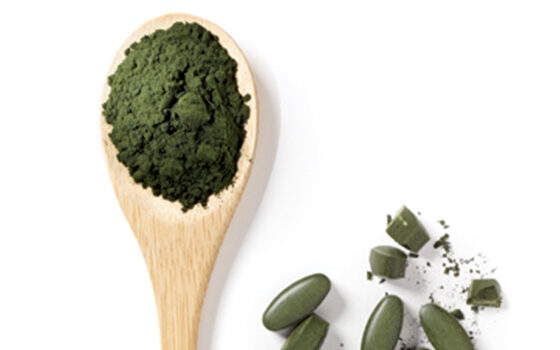Spirulina has been around for ages. In the 16th century, it was already part of the Aztec diet; however, it’s only in 1970 that it appeared as a nutritional supplement in developed countries. Here’s the lowdown on spirulina to make it easier to integrate to your diet.
Spirulina is a comestible blue-green algae (cyanobacteria), a species also found in certain lakes in Quebec. Initially grown in California and Hawaii, it can now be found across the globe and is sold dried in powder or softgel formin the nutritional supplements section.
Nutritional value
Spirulina contains slightly over 55% protein (i.e., 3 g of protein per 5 g of spirulina powder). While its high protein concentration may seem impressive, keep in mind that we consume an average of 50 g of protein per day, which puts its protein content into perspective.
As to iron, we find 1.4 mg of iron in 5 g of spirulina powder, which qualifies it as a source of iron since one serving (5 g) fulfills 10% of recommended daily iron intake.
Regarding the multiple healing virtues often attributed to spirulina, numerous studies are still necessary to substantiate any claims.
In the kitchen
Spirulina powder can easily be added to your recipes. Whether in a smoothie or pancake mix, it will add protein to your recipe and give it a lovely green hue.
Pregnancy and spirulina
While some pregnant women may be tempted to take a spirulina supplement during pregnancy, Health Canada recommends they talk to their doctor first.
References
Health Canada. Canadian Nutrient File. 2015.
CFIA. Vitamin and Mineral Nutrient Claims. 2016

